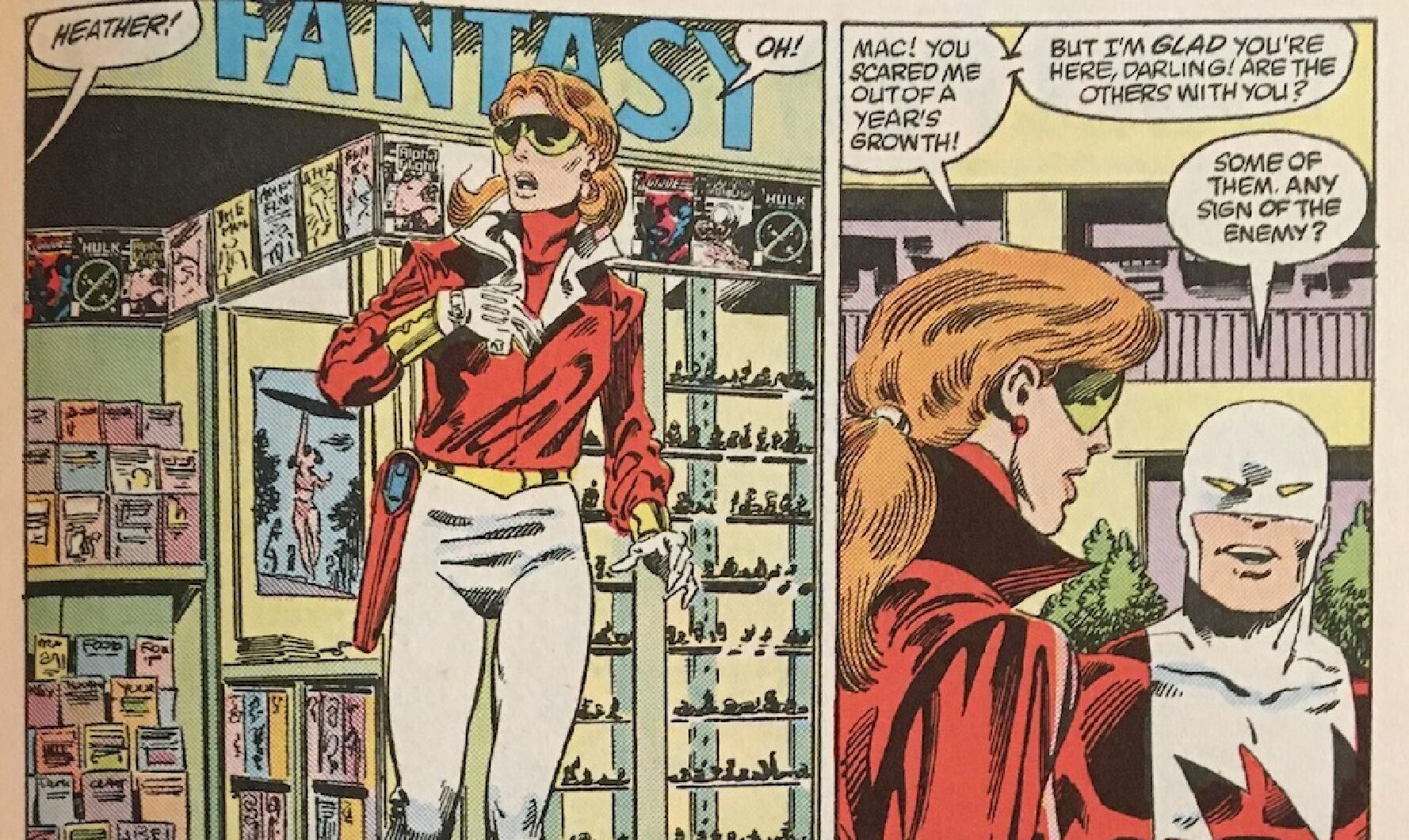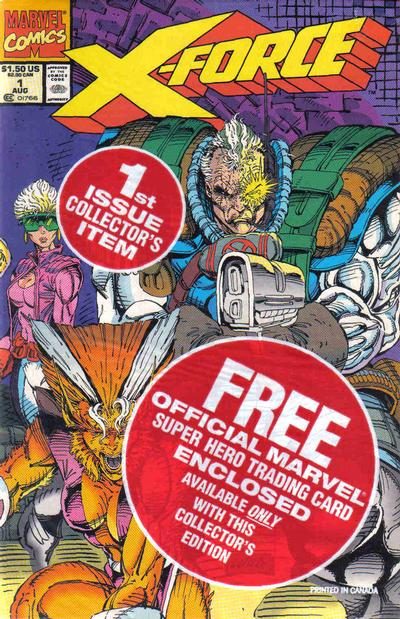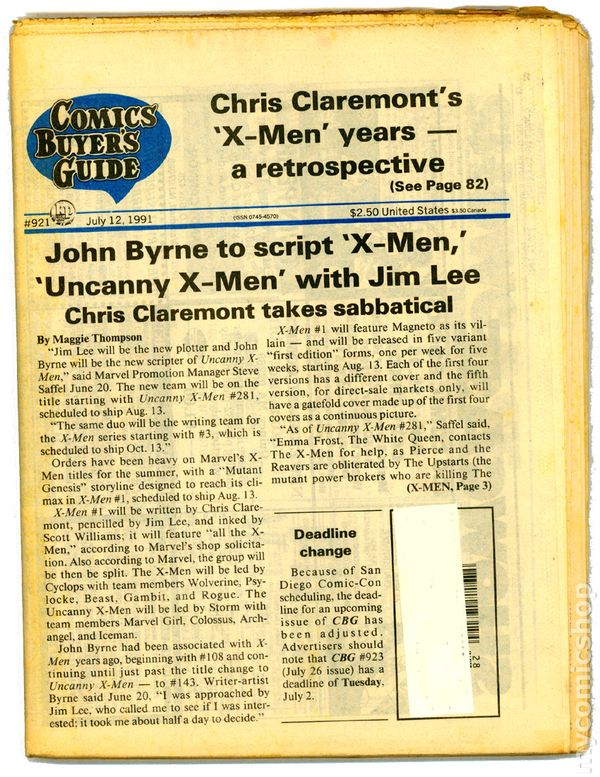I realize the biggest gap in what I’ve written so far is that I haven’t explained my earliest experiences with comics.
My first memory of comic-book material was on television. When I was about 4 — around 1973 — one of the local TV stations in Edmonton aired episodes of the various 1960s DC animated series at about 12:30 p.m. each weekday, right after The Flintstones.

(A side note: The Flintstones ran every weekday at noon on CFRN-TV in Edmonton for pretty much my entire childhood. It was how we measured lunch, as the morning session at school ended at 11:45 a.m. You got home just in time to grab your sandwich or bowl of soup and sit down to watch The Flintstones, and then head back to school after it was over. School resumed about 12:55 p.m., so you usually had a few minutes on the playground before class resumed. I remember visiting Edmonton in the mid-1990s, and The Flintstones was still playing at noon!)

These DC toons alternated, with Superman, Batman, Superboy, and Aquaman all getting a day to themselves. I think Superman may have aired twice.
Then there were the 1960s Spider-Man cartoons. Because this show was produced in its first two seasons by Toronto-based Grantray-Lawrence Animation, the show counted as Canadian content. Even back then, the Canadian government required broadcasters to fill a certain percentage of their airtime with shows produced in Canada. Since Spider-Man qualified, and it was popular, it was in constant re-runs from the 1970s well into the 1990s — usually on the independent channel, CITV-TV.

We had cable back then, but it was minimal compared to what we now think of as cable TV. We got via cable all the local Edmonton broadcast channels, plus the broadcast channels from Spokane, Washington. This included an independent channel, as well as the CBS, ABC, NBC, and PBS affiliates — effectively doubling the number of channels we had. There was no cable box, but every channel from 2 to 13 had something on it.

It was through these channels that we got American Saturday morning cartoons. My earliest memories of Hanna-Barbera shows like Scooby-Doo and Speed Buggy, packages of classic Warner Bros. shorts, and, eventually, Super Friends. For years, getting up to eat cereal and watch cartoons was the best and only way to spend Saturday mornings without exposing yourself to dark and freezing winter conditions.

Before we got Super Friends, there was Shazam! This was a live-action show, made super cheap (not that I knew that at the time), and paired with a second superhero show, Isis. But what grabbed my imagination was the transformation sequence where Billy Batson yelled “Shazam!” and turned into Captain Marvel.
Which lead directly to the first comic book I remember owning: A Shazam! treasury edition I later came to know as Limited Collector’s Edition #C-27. I particularly remember one Captain Marvel Jr. story in which Freddy Freeman was captured at a circus, gagged, and left in a guillotine. He managed to loosen the gag enough to shout “Captain Marvel!” in time to transform — the guillotine blade broke on his neck. Cool stuff!

I didn’t buy that comic — or any others for a while — myself. But there always were comics around. We spent summers at various lake cabins with other families with older kids, and comics were just all over the place. There were plenty of Harvey Comics, Archie Comics, Gold Key Comics, Marvel Comics (especially Millie the Model), and DC books (Batman was popular). With no TV, comics were just what we all curled up and read when it rained or you were just tired from running around outdoors all the time.



When I got a little older, the corner store loomed large in the lives of all the kids in our neighborhood. We were constantly asking our parents for a quarter or two to fund a trip to “the store.” The great thing was you could get just about anything you wanted for a couple of quarters: a chocolate bar, pack of gum, bag of chips, small box of candy, a pack of trading cards (with gum), a bottle of pop, or a comic book.
The store did a lot of business with the neighborhood kids, so the candy and comics — displayed in a classic spinner rack — always were upfront. Located at 12305 63rd Ave., the store did not have a name that I can recall. It was a standard neighborhood convenience store that sold basics like bread, milk, canned goods, newspapers, magazines, and cigarettes. It was owned by a family that came to Canada from Lebanon, and they frequently seemed to sell it to a cousin or brother or uncle — but it always stayed in the family, and they always were very kind to the neighborhood kids.
Such stores were everywhere. Every neighborhood had one. And every one of them had a spinner rack of comics. Comics also could easily be found alongside racks of paperback novels at a drug store, and sometimes in supermarkets. Pretty much anywhere you could stop in for a pack of smokes, a newspaper, or a pack of gum was a place to get comics.

Most of the comics I bought were at “the store.” I remember stopping in one night with my dad, who let me buy a Superman and a Spider-Man — likely The Amazing Spider-Man #162 (Nov. 1976) since I pretty clearly remember Nightcrawler on the cover.



Science fiction was popular at the time, with reruns of the original Star Trek in full swing, so I bought several issues of the Gold Key Trek comic off the racks. I also liked Space: 1999 and The Six Million Dollar Man, and bought the Charlton comics based on those shows. I distinctly remember the story in the John Byrne-drawn Space:1999 #6 — and had no idea he lived just down the road in Calgary at the time.






Star Wars, of course, changed everything. I didn’t see the movie until June 1977, and the first Star Wars comic I saw was issue #3. A friend of mine had a copy of #2, and I managed to score a copy of #1 — the first comic I expressly went looking for — one day at Mike’s Newsstand on Jasper Avenue in downtown Edmonton. Actually, what happened is I spotted the comic there while visiting with friends and, having no money, pleaded with my Dad to go stop by from his office on the way home the next week and buy it for me. And he did!


The treasury editions that Marvel and Whitman published were easy to find, and that’s how I and most of my friends read the adaptation of the movie. Over, and over, and over. They had better printing, too, than the original comics, and were what we now would call oversize.
In the fall of 1977, I bought a copy of Star Wars #7 — the first original Star Wars comic book story. And that was it. I was on the hunt for all the issues after that. I missed #8 and #9, though friends of mine had them and I borrowed or read their copies while hanging out at their houses. Starting with #10, I figured out that Star Wars comics showed up about the third week of the month, usually on a Tuesday. I started timing my searches and successfully bought just about every issue from there through #31. Then there was a stretch where the store stopped carrying comics for a bit, then brought them back in time for Star Wars #39 and the adaptation of The Empire Strikes Back.




The other book I read at the time was Marvel’s Battlestar Galactica. I wanted the TV series to be good, but too many episodes were disappointing fill-in episodes using old Western movie sets. The comic, however, started to get really good after the show was canceled. Walt Simonson took over writing and drawing, and his talent in both disciplines was evident.




The last year of my early comics reading was 1981. The Battlestar comic was canceled. I read Star Wars through #54. And I also had the Marvel Super Special adaptation of Raiders of the Lost Ark, which was the hottest movie of the year. I don’t remember making any conscious decision to stop reading comics, I just moved on to other things.

Fall of 1981 was when I started junior high school, began to earn money by delivering newspapers after school, and became more interested in music and sports — particularly soccer and hockey. Edmonton was then a new addition to the NHL with the Oilers, and had this young hotshot named Wayne Gretzky who played for them. Gretzky and the other young stars of the Oilers were not much older than me — I was 12, they were around 20 — but their on-ice heroics made them appear almost like real-life superheroes who lived in our midst.

I don’t think I bought another comic until 1985, when I dug out my stack of Star Wars comics and rediscovered them. That lead me to the 7-11 and my purchase of Star Wars #96 — and I’ve never stopped buying comics since.

































